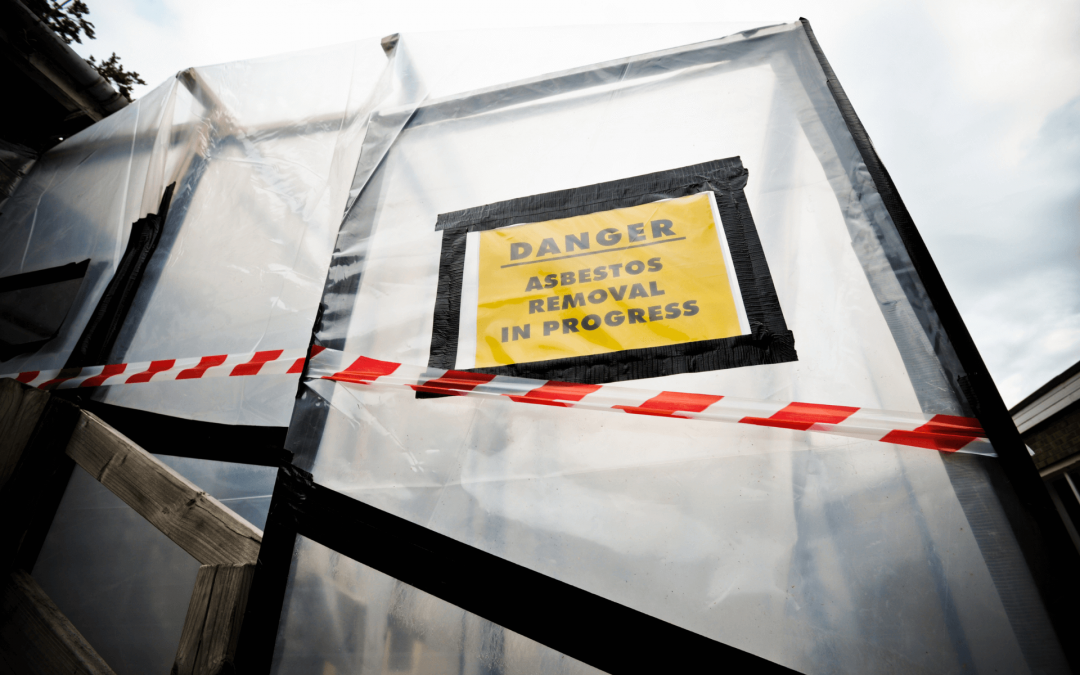Asbestos was widely used in building materials until the late 1980s. Better known for its hazardous health risks, it is important to understand how to detect asbestos in your building. Asbestos remains a common issue in many older homes and commercial buildings across Australia. If you suspect asbestos in your building, it is crucial to handle the situation carefully to ensure everyone involved’s safety. This guide outlines the 12 essential steps to take if you suspect asbestos.
1. Understand the Risks
Asbestos fibres can pose serious health risks when disturbed and inhaled. Prolonged exposure can lead to severe respiratory conditions, including asbestosis, lung cancer, and mesothelioma. Understanding these risks is the first step in addressing potential asbestos problems in your building.
2. Identify Potential Asbestos-Containing Materials
Asbestos was commonly used in a variety of building materials, including:
- Roofing and siding shingles
- Insulation in walls and attics
- Vinyl floor tiles and the backing on vinyl sheet flooring
- Cement sheets
- Pipe insulation
- Textured paint and patching compounds used on walls and ceilings
If your building was constructed before the 1990s, there’s a higher likelihood that it contains asbestos.
3. Avoid Disturbing Suspected Asbestos
If you come across materials that you suspect contain asbestos, avoid disturbing them. This includes refraining from drilling, sanding, cutting, or handling the material in any way that might release asbestos fibres into the air.
4. Conduct a Visual Inspection
A visual inspection can help identify potential asbestos-containing materials. Look for signs of wear and tear, such as crumbling, cracking, or damage. While a visual inspection can provide initial indications, it is not sufficient to confirm the presence of asbestos.
5. Engage Professional Asbestos Sample Testing
To confirm the presence of asbestos, you need to conduct professional asbestos sample testing. Contact a licensed asbestos assessor who can safely collect samples and send them to a laboratory for analysis. Asbestos sample testing is crucial to avoid exposure and to confirm the type and extent of asbestos contamination.
6. Use an Asbestos Testing Kit
For those who prefer a more hands-on approach, an asbestos testing kit is an option. These kits are available for purchase and typically include instructions on safely collecting samples. However, handling asbestos-containing materials without proper training and equipment can be hazardous. If you’re not experienced in handling asbestos, it’s best to leave this task to professionals.
7. Review the Test Results
Once the samples have been analysed, review the test results with your asbestos assessor. If asbestos is found, they will provide recommendations on the necessary steps to manage or remove the asbestos safely.
8. Plan for Asbestos Removal
If the presence of asbestos is confirmed, the next step is to plan for its removal. Asbestos removal should always be carried out by licensed asbestos removalists who have the expertise and equipment to handle the material safely. Attempting to remove asbestos yourself can increase the risk of exposure and contamination.
9. Asbestos Demolition
In some cases, asbestos-containing materials may need to be demolished. Asbestos demolition is a specialised task that requires meticulous planning and execution to ensure the safety of everyone involved. Licensed asbestos demolition professionals will follow strict protocols to contain and dispose of asbestos materials safely.
10. Notify Relevant Authorities
Depending on the extent of the asbestos removal work, you may need to notify local authorities or regulatory bodies. Ensure you comply with all legal requirements and obtain the necessary permits before proceeding with asbestos removal or demolition.
11. Post-Removal Inspection
After the asbestos removal is complete, a post-removal inspection should be conducted to ensure that all asbestos has been effectively removed and that the area is safe for reoccupation. This inspection should be carried out by an independent, licensed asbestos assessor.
12. Ongoing Monitoring and Maintenance
If asbestos-containing materials are left in place but managed, ongoing monitoring and maintenance are essential. Regular inspections will help identify any damage or deterioration that could release asbestos fibres. Follow the management plan provided by your asbestos assessor to ensure continued safety.
Asbestos Removal on the Central Coast
Suspecting asbestos in your building can be daunting, but by following these steps, you can manage the situation safely and effectively. Remember, the key to dealing with asbestos problems is to avoid disturbance and seek professional assistance. Whether you’re a tradie, DIY enthusiast, building company, or homeowner, prioritising safety and compliance with regulations is paramount.
By following this comprehensive guide, you can take the necessary steps to address asbestos concerns responsibly and protect the health and safety of everyone in your building. For more information on asbestos management and testing, visit About the House.
